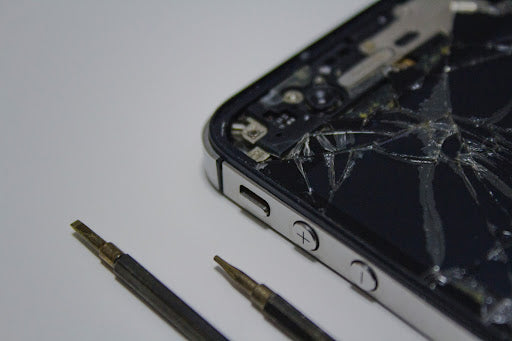The Future of Sustainable Electronics

The global demand for sustainability across all industries is growing at an all-time high, and it’s far from slowing down. This rings particularly true for the electronics industry, but it’s a brand new stomping ground for manufacturers and consumers alike. According to a study conducted by the United Nations University, we will have doubled our use and consumption of electronics by 2050, creating a sharp rise in the amount of manufacturing needed to keep up. If significant changes are not made to suppress the environmental impacts of electronics manufacturing and improper e-waste management, we could be facing a problem unseen before now. In the current prediction model, the amount of e-waste produced over the next 30 years will increase to over 110 million tons per year. The good news is that there is light on the horizon, with new technologies advancing our production and material sourcing that should help minimize the adverse effects seen until now.
Eco-Friendly Designs
One of the first steps toward a more sustainable future in the electronics sector is designing products with environmental impacts in mind. This can be done in many different ways, but efficiency will be the foundation for it all. Energy efficiency must take precedence in manufacturing and production, and material efficiency must become a requirement for product design. By doing so, we will not only reduce overall environmental degradation, but we can sustainably source materials without depleting resources. At the same time, eco-friendly materials will help curb pollution when e-waste is improperly managed - which presents a severe risk to the environment and its ecosystems.
Sourcing Sustainable Raw Materials
With e-waste pollution on the rise, it’s more important than ever that brands and manufacturers begin to sustainably source raw materials that will help prevent or reduce further destruction to the environment. Currently, electronic devices are manufactured with materials like mercury, lead, cadmium, and lithium, all of which wreak havoc on soil, air, and water resources once they enter natural systems. Recent research has confirmed that many alternative materials can be used in place of these, including aluminum, borosilicate glass, iron alloy, and graphene. Not only will sourcing these raw materials to manufacture electronics reduce the amount of environmental degradation due to e-waste, but it will save time, money, and energy throughout the production process.
Energy Efficient Manufacturing
As stated earlier, energy efficiency in production is pivotal in moving toward a sustainable future in the electronics industry. While rising energy costs are a good incentive for companies to increase efficiency throughout production, the benefits seen from this would stretch to consumers and industry giants alike. Governments around the globe have begun incentivizing energy efficiency and reduced greenhouse emissions, so we are on the right track to make a positive impact on a global scale. Still, we as consumers must do our part in demanding green manufacturing for the products that are so intertwined in our lives.
Renewable energy will also continue to receive funding and support, furthering environmental health and the fight against climate change. Wind and solar power are two of the leading green energy sources worldwide, with offshore wind energy production increasing by 16% in 2020 alone. Renewable energy production even continued to rise throughout the global COVID-19 pandemic, showing just how much opportunity there is in the renewable sector. If we can continue to utilize renewable energy in electronics manufacturing, companies will have no choice but to step further into a more sustainable future.
Improved Lifecycle Management
The lifecycle of electronics can be laid out pretty straightforwardly, but it’s not always as simple as it may appear on paper. For a better understanding, the general lifecycle of electronics is as follows:
- Sourcing of Raw Materials
- Supply and Manufacturing of Products
- Sale of Products
- Use of Products
- Products May Be Collected
- Products May Arrive at Landfills
- Products May Be Reused or Refurbished
- Products May Be Recycled
While there is never one consistent roadmap for a particular product, better lifecycle management can be implemented to increase the likelihood of electronics being reused, refurbished, or recycled. As a consumer, the best way to help is to actively seek out avenues in which you can donate or recycle your used electronics. You can also buy green electronics (those that are sustainably manufactured) to reduce the environmental impact of products that end up where they shouldn’t.
Teracube’s Commitment to Sustainable Electronics
Teracube is proud to be a pioneer in sustainable electronics, pushing the envelope and setting a standard for other companies to follow. We recognize that the most detrimental impacts of electronics come from manufacturing process and improper e-waste management, so we designed a line of smartphones manufactured with some green materials that have a lifespan that far exceeds our competitors. All of our phones are backed by a full manufacturer warranty, giving you the confidence you need to make a responsible purchase that contributes to a sustainable future of electronics. We also manufacture our products in a way that allows you to repair and replace individual components, reducing the overall amount of e-waste that ends up in landfills. We are big supporters of the Right to Repair, a movement taking aim at big tech companies that limit the options of consumers to repair their electronics, creating excess e-waste and adversely impacting the environment for the sake of a dollar. As a bonus, Teracube will plant a tree for every device sold - helping to offset our carbon footprint, as small as it may be.



 US
US CA
CA UK
UK EU
EU Global
Global



